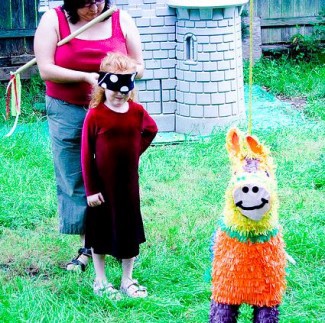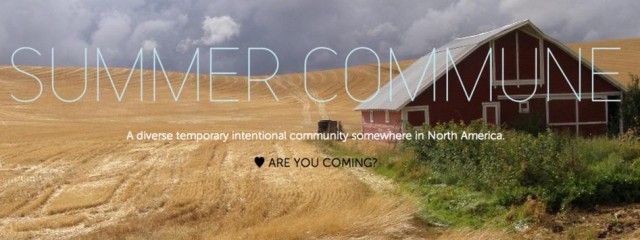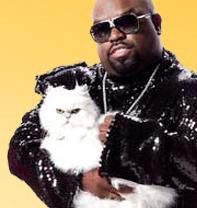Things That Should Fall Out Of A Piñata At A Cinco De Mayo Party

26) Gravy
25) Coupons for candy
24) Pictures of people hitting a piñata from a different piñata party. Everyone will assume they are from your piñata party and it will come across as very clever
23) Dozens of smaller piñatas
22) Sausage links simulating piñata entrails
21) Slips of paper, each with a word that rhymes with piñata: regatta, ricotta, stigmata, sonata… that’s about it actually
20) Bygone knickknacks that someone sentimental might pick up and say, “Oh, this would be lovely on the mantel… if it hadn’t been beaten into pieces”
19) Already scratched lottery tickets
18) Pepper spray
17) Invitations to next year’s piñata party
16) A treasure map with intricate instructions that, once solved, lead to a grave in the yard where partygoers dig hoping to find buried treasure, but instead find a second piñata that is hung in the tree and beaten, breaking open to reveal another treasure map
15) 23 tangled Slinkies
14) Pamphlets detailing the history of piñatas
13) 8 pounds of tartar control toothpaste with micro crystals
12) Newspaper accounts of piñata accidents throughout history
11) The five-course meal everyone was promised once they finished busting open the piñata, with utensils
10) Dripping honey
9) Angry bees that devoted their lives to collecting the pollen to make the honey that was used for a piñata gag
8) One nickel
7) Oxygen
6) Enough gasoline to fill a Chevy Tahoe SUV ($122.61), resulting — when the piñata eventually busts open and spills gasoline all over guests — in a fruitful ethics discussion/fistfight about what’s the responsible-sized vehicle to drive
5) Thousands of spiders, each with tiny wooden sticks attached to them, to defend themselves against whoever kept smacking them about inside the piñata
4) Lasagna
3) A bear trap
2) Ninja — blindfolded, armed, paranoid at having just fallen from a tree to find herself surrounded by the enemy
1) Gift certificates for “3 Good Whacks At Piñata”
Jon Methven is the author of This Is Your Captain Speaking, which can be pre-ordered here. He can be reached here, or follow him on Twitter @jonmethven. Photo by jeffk.
What To Read, Listen To, Look At And Watch Over Kentucky Derby Weekend
“He grabbed my arm, urging me to have another, but I said I was overdue at the Press Club and hustled off to get my act together for the awful spectacle. At the airport newsstand I picked up a Courier-Journal and scanned the front page headlines: ‘Nixon Sends GI’s into Cambodia to Hit Reds’… ‘B-52’s Raid, then 20,000 GI’s Advance 20 Miles”…’ 4,000 U.S. Troops Deployed Near Yale as Tension Grows Over Panther Protest.’ At the bottom of the page was a photo of Diane Crump, soon to become the first woman jockey ever to ride in the Kentucky Derby. The photographer had snapped her ‘stopping in the barn area to fondle her mount, Fathom.’ The rest of the paper was spotted with ugly war news and stories of ‘student unrest.’ There was no mention of any trouble brewing at university in Ohio called Kent State.”
— The Kentucky Derby is this weekend in Louisville, always a good time to read Hunter S. Thompson’s 1970 essay, “The Kentucky Derby Is Decadent and Depraved.” Garden & Gun magazine provides us with mint julep recipes and pictures of the crazy hats people wear to the annual festivities. And if you’re not going to the races, and will instead be stuck home sitting in front of your computer, here are twelve songs to listen to that are not by Dan Fogelberg.
Adam Yauch, 1964-2012

Today is a very sad day in that Beastie Boy Adam Yauch has died. He was a terrific musician and filmmaker and a warm, funny person who a lot of people loved. I got to know him a little bit in the ’90s because my roommate from college helped him run his Tibetan-Freedom organization, The Milarepa Fund. The way that he handled the news of his cancer diagnosis three years ago impressed me as amazingly graceful. Which was not a surprise — the way he handled it, I mean. He had always handled maturing, and changing, in the public eye more gracefully than many other examples we’ve seen.
When the Beasties started out, with the beer-spraying and the girls dancing in cages and whatnot, Yauch was the loudest, most raucous and drunken member of a notably loud, raucous, drunken crew. But as time went by, he became a voice for peace and sensitivity and caring about the world — without ever turning shrill or holier-than-thou. He became gentle and soft-spoken without losing his sense of humor. I remember reading an interview (I wish I could find it but I can’t) in which the reporter challenged him on the change: “Is the current pose not hypocritical in light of the past?” Yauch didn’t flinch or get mad or defensive. He said most everyone has a time in their life that they look back on with regret. He used the word “asshole,” I think. And he said, “We just happened to be on TV a lot when we were assholes.” I’m paraphrasing, but I think that’s pretty much it. I think about that a lot as I get older myself, and look back at stupid things I’ve done. And as I’ve been writing about those things a lot over the past couple years, I hope to be as honest about stuff as he was. And as kind-hearted and forgiving. He was a really good guy.
The Creative Class is Moving to Moscow, Idaho This Summer

Beginning June 1, a number (unspecified) of people are moving to Moscow, Idaho for the summer. Why? Because it’s “a small college town with the luxuries of home (espresso + broadband).” Would you like to join them? They have a Facebook page. And a Tumblr. At least 30 people have committed to going so far. Sign up here!
"99% Invisible": The Awesome Little Radio Show About Design
by Mark Lukach

Three things you probably didn’t know about your toothbrush: There are five common toothbrush grips, including one with the suggestive name of ‘the death grip’; fat-handled toothbrushes make for a more comfortable grip; and, despite perceptions otherwise, straight-handled toothbrushes make for better brushing than bent-handled ones.
I learned these random tidbits while listening to “99% Invisible,” a tiny little radio show about the world of design, focused on the design of things we often overlook. As Roman Mars, the show’s host, notes at the end of the toothpaste episode: “In design, the thing you don’t think about or notice probably had the most thought put into it.” Mars’ show is witty, insightful; it tells the types of stories that you can’t wait to share with someone else. No design feature of our modern lives is below scrutiny: stamps, cul-de-sacs, cash-checking stores. And it’s all created and produced by someone who isn’t even a designer.
Roman started “99% Invisible” two and a half years ago. Now up to 52 episodes, it’s produced in collaboration with San Francisco-based station KALW and distributed by PRX. When I met up with Mars recently, at a café in Berkeley, he told me he doesn’t think his lack of a design background hinders the show’s mission. “I don’t have to be an expert on design to talk about design,” he explained. “I can just enjoy it. It takes a genius to make it, and anyone can appreciate it, and that’s the point of good design: that anyone can appreciate it.”
The episodes tend to follow a common template, first examining an object closely, for its most fascinating and underappreciated characteristics, and then extrapolating from there to larger lessons about how design works. At the close of an episode about airport terminals, Roman concluded, “for anything complex, perfect design is a moving target.” And in a show about parking meters, he said, “like the best design, it only works if you don’t have to work to make it work.”
Often these are everyday objects, like toothbrushes or steering wheels. Other times, the show may spotlight something you’ve probably never heard of, like concrete furniture, or the Darth Vader Family Courthouse. (That last one, by the way, is a favorite of mine.)
Roman seems to particularly delight in explanations of why you haven’t heard of the object in the first place. Take, for example, an episode Roman collaborated on with writer Jon Mooallem. The two examined two children’s toys, the teddy bear, and the billy possum; yes, the billy possum. Thanks to Teddy Roosevelt, the origin of the teddy bear is of course legendary. What you may not have known is the origin of the other toy, the billy possum, which is linked to Roosevelt’s successor, William Taft. After a political dinner in the South, at which he ate homecooked possum, Taft supporters introduced the next president with his own children’s toy, named the Billy Possum. Since he was going to follow in Roosevelt’s footsteps as president, he needed a stuffed animal to accompany him. Which is ridiculous. And now the teddy bear lives on as a cherished children’s toy, while the billy possum has faded into obscurity. Why? It’s with questions like these that 99% Invisible’s at its most fun. Roman and Jon conclude that the billy possum doll faded into obscurity because of the toy’s lackluster origin story. Because honestly, who wants to play with a toy inspired by a president devouring a cooked possum?
***
Roman studied science as an undergraduate, coming close to getting a PhD in genetics. After leaving academia, he did a wide array of odd jobs, including a period making prosthetic limbs. All the while, he was a huge fan of public radio, and wanted in. “After listening to tons of public radio, I loved Ray Suarez of ‘Talk of the Nation.’ And I thought, ‘I bet he has a person who reads the books and writes the questions with him beforehand.’ I didn’t know what that job was called, but that’s what I wanted.”
By then in his late 20s, he figured his best shot was to teach himself how to use Pro Tools and apply for public radio internships across the country. He eventually got one at KALW in San Francisco; six months later, he’d landed his own show at the station, an appreciation of underground culture called “Invisible Ink.” A few years later he went to work at Resound, a show created by the Third Coast International Audio Festival, based in Chicago. There, he told me, his real apprenticeship began. Resound broadcasts a selection of compelling radio stories selected from around the world, and Roman’s job was, basically, to listen to a lot of radio and pick the best stories. He called this period “my graduate school of radio.”
Having returned to San Francisco some years later as a freelance producer, he was approached by his old employer KALW about creating an “architecture minute” for the station, which became “99% Invisible.”
***

In creating “99% Invisible,” Roman was very deliberate in his choices. He’d learned the importance of an engaging soundtrack from his years of listening to “This American Life,” a show he describes as “seductive.”
The voice he would use on the show was another critical element. If you’re in radio, there’s your speaking voice, and then there’s your radio voice. When I interviewed Roman, he was kind enough to lean in close to my recorder and “perform” his radio voice. The leaning in close is the key part. When listening to other radio shows, he’d always gravitated to the ones where the narrators mic themselves closely, since it makes their voices sound like they are coming from inside your head when you listen, and he wanted that. (It’s probably not a bad thing that he’s a fan of close micing, since it’s become a necessity in how he produces “99% Invisible.” He records the narration for the show from an improvised recording set-up in his bedroom, taping late at night — closet door open to muffle echoes — after his twin sons have fallen asleep.)
He’s frank about which radio voices he tries to emulate. “There’s a bit of plaintive wail in my voice that is copped from Ben Walker [on “Your Radio Nightlight”]. The soothing, explanation thing is part Jad Abumrad [on “Radiolab”]. The trying to be your friend, conversationalist thing is Ira Glass [on “This American Life”]. And hopefully in that process I find me.”
The initial idea for an “architecture minute” show on KLAW had come from the American Institute of Architects in San Francisco. The design firm Lunar jumped aboard as a corporate sponsor for the show, which broadened the scope beyond architecture. Roman wasn’t going to need studio space to produce the show. But he did have one demand: “It can’t be a minute, because you can’t love a minute. We can make something that people can love, but people can’t love a minute. So I got 4 minutes and 30 seconds.” That’s one of the more unique attributes of 99% Invisible: it’s really, really short. As KALW envisioned it, the show’s length made it a snug fit in the regimented broadcast schedule, as an occasional alternative to the news-in-brief that runs every half-hour.
Roman made the first few episodes for the radio, released them through his website as a podcast after they’d played on KLAW. Almost immediately fans began to chime in: we love the show, but it’s so short. Can’t it be just a bit longer than four-and-a-half minutes?
***
It’s at the intersection of podcasting and radio that Roman is doing his most innovative work. Sure, a radio show about design is cool, and a high-concept sound aesthetic is nice, but there are plenty of other radio shows about cool things that sound good. What sets “99% Invisible” apart is its accompanying podcast.
Podcasting is a strange bird, a popular medium with countless participants, but one where innovation is fairly limited. Popular podcasts, the sort that hover in the top 25 of iTunes, can basically be divided into two categories: The professionally produced ones, and the more amateur podcasts, the majority of which are comedy-based. In the professional group are podcasts for NPR shows like “This American Life,” which tend to be exact mirrors of the shows; or come from well-funded enterprises like “ TED Talks.” In contrast, the low-budget ones typically feature a few comedians telling jokes and interviewing guests, without any real emphasis on production value. In short, almost all popular podcasts are either clones of professional radio shows, or low-budget chats that have no ambition of being on the radio. It’s like the two groups think they don’t have anything to do with each other, when they obviously do.
It’s this gap that Roman’s attempting to bridge with “99% Invisible.” With fans demanding longer episodes, and KALW not able to budge in its time restriction, he began producing two separate versions of each episode. One was going to be radio-ready at four and a half minutes, and the other was going to be as long as it needed to be, for the podcast. The podcast versions range from only a few minutes longer than the radio version, to as much as three times longer.
As he explained it to me, “I spent so much of my life cutting things to make time, or filling things to make time, and I never want to do that again. In a way, having two versions is a pressure-release valve. It’s always really painful to make cuts, but knowing that there’s a version out there with that one little extra anecdote? That makes it a little easier.”
There’s currently no other show that makes two versions of the same story — one for radio and one for podcast. The only show doing anything remotely similar is “Radiolab,” which creates about six high-quality, hour-long radio programs a year. In addition to those, they produce “shorts,” which are only available on the podcast. An innovative approach, to be sure, but these shorts are akin to the extra scenes of a movie that come on a DVD — great but discrete bonus tracks.
Whereas what Roman offers is two full, alternate versions of each story. Whether you listen to him on the radio, or download his podcast, determines which version you hear. Download the digital version and you’ll get a story that’s longer, because it keeps in the quirky little tangents that every radio editor would love to keep, but has to get rid of. Also, at the end of each podcast, Roman talks to his listeners directly. It’s similar to how magazines like The New Yorker are including extra content, like videos and slideshows, in their iPad apps. But Roman’s doing it for audio; and as far as I know, he’s the first.
It used to be that the success of a radio show was evaluated almost exclusively by how many stations syndicated it. But Roman is keenly aware of how that’s changing; and he’s positioning “99 Invisible,” small as it is, for success across new metrics, i.e., how many listeners download each episode, rated the show on iTunes, Liked it, Tumblred it, and so on. The emphasis Roman places on digital distribution is actually part of a broad, alternative vision he has for how public radio might be funded in the future, which he described in our conversation. Hour-long shows employ multi-person staffs, require equipment and studio space, which all costs money, which means one thing: pledge week. By comparison, Roman works by himself (with the help of freelance contributors, of course), in his house, which dramatically cuts down on the cost of production. Even though “99% Invisible” is short and doesn’t cost a ton to make, a lot of people listen to it, and like it. As in Facebook Like it. As Roman sees it, there are plenty of hungry-for-work, experienced radio producers out there who would jump at the opportunity to work on similar shows. Because shows like these would be more affordable to produce, they’d be manageable for a single sponsor to cover (as with Lunar’s sponsorship of “99% Invisible”). Get a bunch of shows like these up and running, string all the content together, and you’d end up with a hodgepodge, live stream of public radio. It wouldn’t sound anything like what you’re used to hearing when you tune into your local NPR station, but who says the old model is the only way?
You don’t have to be a radio geek to be excited about the ways “99% Invisible” is doing things differently; a huge part of the satisfaction of listening is because the show has been so clearly designed by someone who has himself put in a lot of time as a radio listener. Take this episode, in which one of Roman’s contributors mentions the song “Hotel California.” Close mic’ed, so it sounds as if he’s speaking directly to you, Roman says, “This is where a normal public radio show would play the song ‘Hotel California.’ But I am your friend, and I would never do that to you.”
Mark Lukach is a writer who lives in San Francisco with his wife and bulldog. If this story had come out three weeks later, he might have been able to add “newborn son” to that list, but for now, they are still waiting. He’s on Twitter!
U2 Somehow Compared To Picasso, Mariano Rivera
“We didn’t get to sit in while U2 created their songs or when Picasso painted, but for the past 17 years, we’ve been able to watch Rivera step into crises over and over and over, throwing the same pitch over and over and over even when hitters knew which pitch was coming, and almost always Rivera has come out the other side shaking hands and high-fiving teammates.”
Dick Dale Is 75
A very happy birthday to Richard Anthony Monsour, King of the Surf Guitar. The man better known as Dick Dale was born 75 years ago today.
David Bowman, 1957-2012
Novelist and Talking Heads fan David Bowman, whose Let the Dog Drive was one of the more memorable debuts of the ’90s, has died. He was 54.
Brand New CeeLo Track! The... Meow Mix Theme Song Remix

Press release of the day: “A Purr-fect Fit: CeeLo Green And Purrfect The Cat Remix Meow Mix® Cat Food Jingle: CeeLo Green, Recording Artist and Mentor on NBC’s Hit Show “The Voice,” Heads to the Studio with Purrfect the Cat to Put a New Spin on One of America’s Most Memorable Jingles.” OH GOD IT’S LIVE AND IT’S HORRIFYING.
